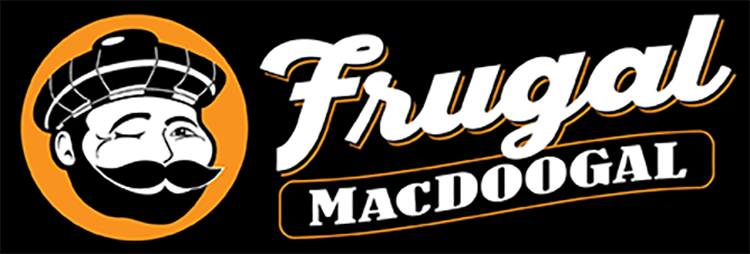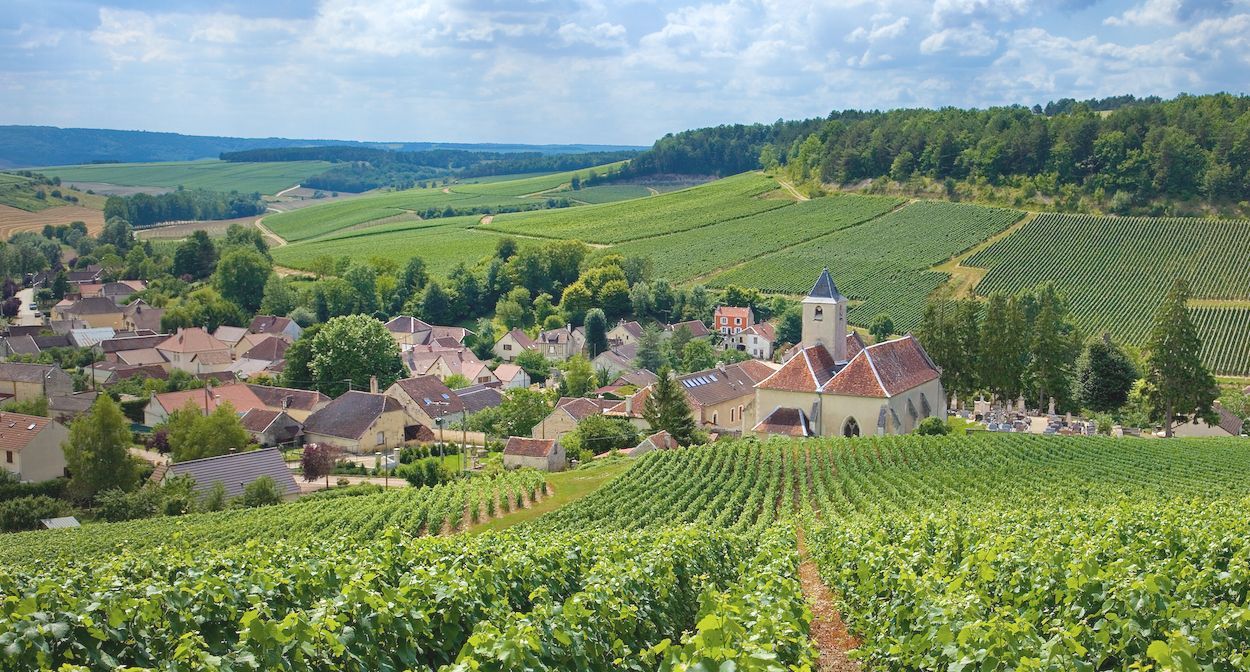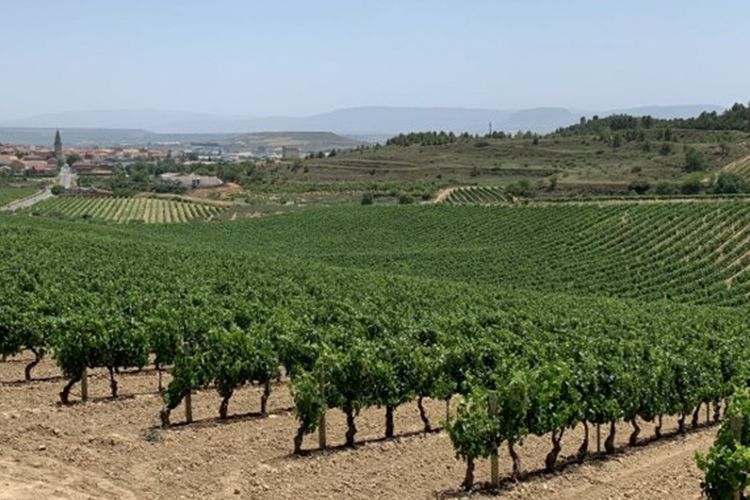Austria! (Part 2)
Austria Part 2 - Wachau, Kamptal, and Röschitz (White Wine Country)
Our first trip out of the city was northwest to Wachau, the most beautiful location we would see the entire trip.
The valley was otherworldly, and the weather perfectly gloomy. We drove on thin roads along the Danube River, weaving back and forth, long spurts with hand laid gray stone walls just feet off the road on our right, of which terraced vineyards reached acres up out of sight disappearing into the fog.
The clouds were thick, quick, and swirly overhead. A light mist sat over us. As we drove we caught glimpses of the steep terraced vineyards that reached into the nooks and crannies of massive exposed rock hills. The vineyards reached down to our van as it sped along and then to the river that flowed quickly to the left side of the van just off the road. The fog creeping out of the little valleys between each sharp stone exposed peak was truly a sight to see. Epic.
In fact, Wachau is one of Austria’s twelve UNESCO World Heritage sites and the only one that has anything to do with wine. It only accounts for about 3% of the country’s total wine production, and yet it is one of most famous and renowned wine regions in Austria. There are a few important reasons for this: the wines that come from Wachau are some of the best wines being produced in the country, the place’s history is old and well preserved (as obvious in the stone terraces first laid in the Middle Ages as the valley began producing wine on a large scale), and the valley is GORGEOUS. People don’t just take wine trips to drink wine, they take wine trips to see beautiful places. It just so happens that wine grapes really love beautiful places, and the Wachau is one of them. The steep slopes of the Danube and the erosion that has taken place over the millions of years that the river has been carving its way down creates a perfect place for grapevines as the soil is ancient bedrock that allows water to easily drain through it. Remember, we like grapevines to struggle a bit, which is why rockier eroded soil is perfect for certain vines. This forces the energy of the vine to go into making quality fruit instead of big bushy leaves and long limbs. The Danube itself also acts as a temperature regulator bringing cool air from the north during the hot summer leading up to harvest. There are many microclimates as well that create grüner and riesling wines that drastically change in aroma and flavor.
Getting to see the old stone terraced hills reaching up and away from the mighty Danube was a highlight of the trip.
After a few miles of beautiful steep hillsides, we pulled into Weingut Josef Jamek, a winery right off the main road. We walked through the drizzle into the winery and straight to a long table in a beautiful room with glass walls displaying a grand view of the vineyards. There, we tasted 20 wines with Herwig Jamek.
Jamek wines, unlike many American facing white wines from Austria, are aged in large neutral oak barrels, giving these wines a rich complexity that balances perfectly with their ripping acidity. We tasted wines of all Wachau designations here, a specific designation system that is only used in the Wachau but that isn’t wholly different from the Prädikat system used in Germany and much of Austria. Designations of Steinfeder, Federspiel, Smaragd roughly describe early harvested wines with lower alcohol levels to riper wines with higher alcohol levels. There are obviously many more details to the regulations but that is the gist.
Highlights from Jamek follow -
Vocab - (Ried = single vineyard, cru. This will be followed by the vineyard- Liebenberg, Achleiten,etc.) (Gruner Veltliner, riesling = grape)(Smaragd, steinfeder, federspiel = designation)
2022 Ried Liebenberg Grüner Veltliner Smaragd - lemon cream, so much depth. Yellow apple, stone, honey, flowers. One of the more famous vineyards in the region.
2022 Ried Achleiten Grüner Veltliner Smaragd - Still closed but I can see it has so much more to give. Would love to taste in 5-10 years. Still amazing with minerality, pineapple, and a super cool umami note. The Achleiten vineyard is one of the most famous and most beautiful, reaching all the way from the river up into the forest at the top of the hill.
2022 Weissburgunder (pinot blanc) Wosendorfer Smaragd - rich and round, balanced with lightning acidity. It’s the balance for me-the back and forth- the opposition of flavor and texture. Delicious and very tropical, pineapple, guava, banana, lemon. Herwig told us that pinot blanc’s overall higher acidity is causing growers to plant more and more of it as the planet warms.
2022 Freiheit, Dürnsteiner Riesling Smaragd - alluvial soils in the warmest area of Wachau. Small amount of botrytis. Wow delish. Complex. Honey. Melon, dandelions. White flower pollen, stone fruit.
2022 Ried Klaus Riesling Smaragd - highlight from their most prized vineyard- Jamek’s most known bottling that has cult status amongst collectors and winos. Complex. Could smell all day. Asian spices, blue candy, rich texture, long finish. Blood orange, perfumy. Such a complex nose. Weird in a way that keeps bringing me back for another smell and taste. Still so young. I thought, ‘man I’d love to taste it in 10 years’, when Herwig busted out our next wine
2016 Ried Klaus Riesling Smaragd - Cold and rainy vintage. Petrol, tropical, spice, candied ginger, herbs on the nose, but so much honey and fruit on the palate. So fresh still. Banana. Tropical fruits. More developed than 2022, although the youth of 2022 had some fun complexity, this wine is more complete. Still has time left.
We tasted about a dozen other grüners and rieslings and then some other things like winery only bottlings of pinot noir and chardonnay that were tasty but lacking. Personally I thought the pinot and chard were nice to taste next to the grüners and rieslings. It made the grüners and rieslings shine that much more. It was a reminder of the reality of terroir. This is why these wines are made here. Grow what works best. The terroir and tradition made sense after tasting these wines. Jamek’s production is pretty typical for wine regions north of Vienna- 68% grüner, 18% riesling, then pinot blanc, then a scattering of other varieties.
We had a delicious meal after our tasting, thanked the family for their hospitality (although we couldn’t thank them enough), and hit the road heading northeast to our next location, Kamptal DAC.
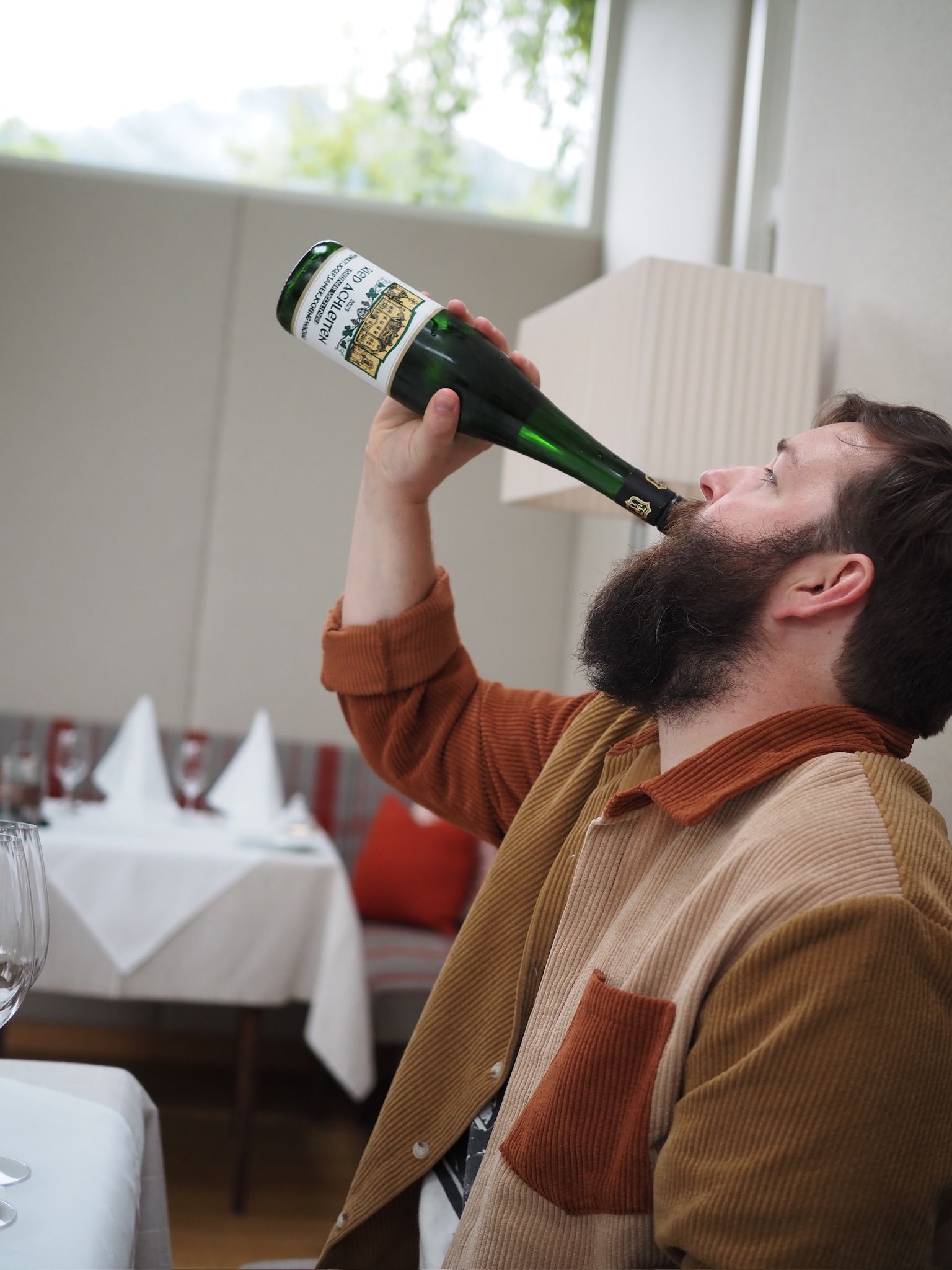
The Kamp river flows about 100 miles before dumping into the Danube. The last little section before the Danube that stretches north to south is where the Kamptal DAC wine region sits. The Kamp is even more white leaning than Wachau with about 82% of planted vineyards being to white varieties, the majority of which is grüner.
Waldschütz, our next visit, had a totally different vibe than Jamek. If Jamek was wearing a necktie, Waldschütz hadn’t only taken its tie off but had thrown on an old torn band tee shirt that they’d owned for so long it had gone from trendy, to gross, and then back around to being trendy again.
The tasting room reminded me of a garage with low ceilings, a kitchen, dozens of empty bottles they had drunk from around the world, and large format bottles they had bottled sitting around haphazardly. We were welcomed by Markus Waldschütz, fourth generation vintner, who glugged out a glass of Gelber Muskateller for each of us as soon as we walked in the door. (Gelber Muskateller = Muscat Blanc à Petits Grains/Moscato but dry and delicious). Markus took over the 35 hectare family winery just last year from his father Reinhard Waldschütz who had run it for the previous 35 years.
We walked the property tasting out of barrels, eggs, stone cylinders, whatever vessel we happened to be walking passed. It was here, along with Jamek, where I began to realize what great grüner tastes like. The wines were as lively as any we tasted, but it was that liveliness balanced by a richness that I didn’t know existed in grüner.
Over half the 8,600 acres planted in Kamptal are grüner. These wine regions are small. For reference, Wachau is about half the size of St. Helena, one of the 16 sub AVAs of Napa Valley, and Kamptal is just a bit larger than St. Helena. Both DAC are very tiny compared to other famous growing regions around the world. The Kamp river that runs through the region and from which the region gets its name acts as a regulating body here, cooling in the day and warming the surrounding vineyards at night. It also brings a breeze through that helps dissuade static humidity and thus mold and mildew.
We walked around the cellar and small caves they had dug out. It was a maze of a winery, but a fantastic lab, experiments happening around every corner. Here were some of the wines we tasted.
(Additional vocab - 1ӧtw refers to classification of single vineyard wines. 1ӧtw can be compared to Premier Cru, making up only about 15% of production, part of the top tier of the quality pyramid. Only above that is Gӧtw, which could be compared to Grand Cru, although no vineyard has yet been given this distinction, as this new classification system was only established in 2023.)
2023 Gelber Muskateller - beautifully aromatic, peachy, sweet aromas but dry on the palate. Monotoned but delicious.
2022 Ried Rosengartl Grüner Veltliner - Classic, rose, pepper, amazing
Stonevision Non-Vintage - Stone Vision is a vintage cuveé made from Grüner Veltliner, Riesling and Sauvignon Blanc from three different vintages: 2019, 2020 and 2021. Only the best grapes from Waldschütz are selected then matured for up to 36 months in granite stone barrels. This wine is cool. Never had anything quite like it. Tropical nose, good spice, honey and lime zest, minerality. Juicy but tight with great acidity.
Ried Grub 1ӧtw Grüner Veltliner 2022 - (from tank) - spice. rose. bright. screaming.
Ried Grub 1ӧtw Grüner Veltliner 2021 - (from bottle) - denser, rich and full but balanced by acidity. Still chuggable and delicious. Touch of white pepper, apple, white peach.
Riesling Strass “Venesse” 2023 - wow. So aromatic. Almost muscat. Peachy, juicy, floral, dominated by fruit.
Ried Gaisberg 1ӧtw Riesling 2020 - best wine of the day. Big boy but restrained. Still hiding. Minerality, honey, orange rind, floral, tropical and citrus, complex. From the acclaimed Gaisberg vineyard, mentioned alongside famous neighboring vineyards Lamm and Heiligenstein. Founded on primary rock of gneiss and mica-schist.
Ried Gaisberg 1ӧtw Riesling 2015 - Markus’ first Gaisberg vintage. It is sitting pretty. Still has some time, but a bit closed. Not as complex as 2020, beyond its age.
We also tasted some unfinished experimental things like a natty untouched wine from tank and a sparkling wine from riesling. Me and the boys (Chris, Manfred, Stephen, and Millie (honorary boi for the day but actually Chris’s beautiful infant girl) had found a bottle of 2002 Dönnhoff Riesling Spätlese Niederhäuser Hermannshöhle the day before at a wine shop in Vienna. We had it with us and figured this was the moment to pop the cork! - There was some age on the nose, but just in a beautiful rich desserty way, not a flawed way, but the palate was wow! so young and fresh. Fresh fruits, minerality, and petrol. The gems you can find when you keep your eyes peeled.
Another cool thing at Waldschütz was their private cellar aging program. If you purchase a large format bottle from Waldschütz they will age it in their cellar, for as long as you’d like. Stephen and his wife purchased a 3L, signed a sweet note to their kids on it, and left it to be cellared until they can return when the kids are 21. Pretty cool thing.
We could have hung out in that little tasting room for hours, but time was ticking and we had to move on to the next.
The small production wines at Waldschütz were some of the best we had on the trip. Stonevision, Riesling Strass “Venesse”, and their great value Kamptal Grüner Veltliner are now available at Frugal.
Our next trek was even further north to Roschitz in the Weinviertel DAC. Our first stop here was at a winery that makes one of our best selling white wines. You heard me right, one of our best selling white wines is a 1 Liter grüner from Austria. If you’re a member of the wine club or have been a Frugal customer for a bit then you know the wine. If not, stop reading and come grab a bottle before you continue. It is hard to beat at its price point ($13.99) yep, and you get an extra tall glass in the 1L. It’s called #GVLTAT, has a brown label with cool cream writing and is on a giant display right in the middle of the wine department. It is a great example of a crowd-pleasing crushable grüner.
The winery is Helenental, a storied winery that was founded as a coop in 1942. It went into private hands in 2013 and was the largest production facility we visited. Owners Walther and Manfred, and winemaker Patrick walked us around, showing us their new bottling line, massive tank room, and dusty cellars. One of my favorite memories here was in the cellar. We took a turn down a dark alley, who knows how far below the surface. We were led into a nearly pitch black room and told we’d need our phone lights. What we saw when we flipped them on was amazing. Hundreds and hundreds of bottles in a cellar, caked with decades of dust and mold. The bottles were so filthy that most labels couldn’t even be made out. The owner told us that there were bottles from the winery in here going all the way back to the 1940s. Then, he said “pick one”.
As an ex history teacher, history lover, wine professional, and wine lover, ya boy was in heaven. Living history. It was an incredibly kind gesture and an unmatched move as host. Chris, Stephen, and I each picked a bottle blind, all three when uncovered were from the 1980s. The bottle I picked was a grüner from 1982. We opened it up the next night on our hotel's rooftop bar. Most of the fruit had fallen out, the acidity barely holding it all together, but what a cool experience.
We left the cellar and tasted a handful of things from tank before heading to sit around a table in their offices. Over some delicious homemade goulash and schnitzel we tasted the new 1L of Zweigelt and 1L of Zweigelt rosé (now available at Frugal) and a dozen or so other wines the winery offers. We ate, drank, and laughed. The old me were fantastic hosts and businessmen. They loved to hear that you (our great Frugal customers) love the wine. They burst into applause when they saw my picture of the display in the store ha. So, thanks to you for being both loyal and interested in trying new things.
We could have hung out there all night but had to rush out to head to our next, and final visit for the day, one that would somehow top this.
That next stop was less than 10 minutes away.
Gruber Röschitz is siblings Maria, Ewald, and Christian Gruber. They are the 3rd generation of their family winery and have changed the direction more so than any other before them.
Part of this change was building a new winery, which was finished only weeks before our arrival. We were actually the first industry visit they had hosted. You could tell they were still in shock at the beautiful space in which they now get to work. We started in the tasting room, a beautiful modern mix of wood and stone with a full wrap around patio and garden. The architecture mimicked the biodynamic grape growing and winemaking they practice. I think they wanted to display how everything is connected (a pillar of belief in biodynamic practice), even down to the shape of the winery, and they nailed it.
From the tasting room we walked outside through the beautiful gardens, down a small stone path to an alley fifty or so yards behind the winery. The alley was lined with ancient looking buildings. I could tell right away they weren’t houses because of their small size and lack of windows. The row was too cute. There’s really no other way to describe it. Cobblestone street, cream painted fronts, hundred year old wooden doors, stone shingled roofs.
We gathered around and they told us that these were family cellars, used to store produce and wine for centuries in cooler temperatures beneath the ground. These small rooms, dug out of the ground by each family, grew and grew over the years to large rooms until they connected to each other beneath the surface.
During the renovation the Grubers purchased about a dozen adjacent ones to use for their own purpose. We stepped up to one of the old doors and stepped right in. In the first small room was a museum of sorts with some of the family’s old tools like a giant wooden basket with a stone balanced press. We walked down cobblestone ramps deeper into the earth, hallway to room, hallway to room until a newer renovated area came to be. Maria opened the door and before our eyes was an enormous state of the art winery. It was disorienting, knowing we were still so far underground. It was as if we had traveled through time, from ancient cobblestone paths and mud walls to shiny stainless steel tanks and computer screens.
The siblings orientated us. A tunnel had been dug from the old cellars a street over to the newly built underground winery below the tasting room where we had started the visit. It felt like a nuclear silo- giant, open, full of pristinely shiny metal and concrete columns, tools, and tanks.
They were pumped. Maria told us that while they won’t currently use even a quarter of this space, they now have room to grow. They showed us around and demonstrated some of their new equipment. They laughed as they tried to remember how to work certain functions on the ipad that controlled every device in the place.
They were in as much awe as we were watching their 20 ton automated crusher destemmer roll silently on a rail track 40 feet above our heads to line up perfectly, to the millimeter, with the press below.
I was pumped for them. Working all those years (3 generations) and then finally being able to design and build your dream winery must be a really good feeling.
We returned to the tasting room, via a new set of stairs, through a door in the back. Here we got a better look at the room we started in.
They showed us the beautiful glass walled cellar in the middle of the room and described how it is temperature controlled through pipes that reach down beneath the surface to the actual cellar, not an AC unit. Amazing.
The wines were displayed on 3 foot columns of dirt cut perfectly from the soil from which that specific wine came. Wow. They had to be the coolest wine bottle displays I have seen. The details were undefeated. Every part was thought out.
We sat down for dinner in a beautiful modern dining room and began a formal tasting of the wines. We started with the wines we carry and are purchasing for the store, then into some ideas and experimental wines they are working on for us. After that we tasted their small production biodynamic high end black vintage (black label) wines they make so little that they don’t have enough to export but that were the best wines of the night. Then we tasted some of their flagships and unusual things and then ended with a delicious dessert wine. Here were some highlights.
“By Nature” Organic Riesling 2023 - Dry. lime, peach, floral. Minerality on the finish. Great acidity. Great example of a dry riesling. Food wine. Available at Frugal.
“By Nature” Organic Grüner Veltliner 2023 - apple, pear, citrus. A touch of that classic grüner spice. Available at Frugal.
Cuvée Royale 2022 - 50% St. Laurent 50% Merlot blend they’re working on was super cool, fresh bright red fruit. Black cherry, tea, blackberry, tobacco. Medium body. Favorite red of the day.
Black Vintage Riesling 2021 - herbal spice, a little apricot, papaya touch, candied clementine zest. Good complexity, salty, fresh and lively, white stone fruit. yum. Too bad they don’t make enough to export.
Black Vintage Saint Laurent 2021 - spice, herbs, medium bodied. Red fruit nose. Plum and blackberry palate. Delicious.
Ried Mühlberg Grüner Veltliner 2022- was amazing. The balance of weight and brightness was spot on. Guava, hints of papaya, mineral nuances. Juicy, spicy, well-integrated fresh acidity, ripe tropical fruit, yellow apple.
Gelber Muskateller 2023 - learning that the variety (yellow muscat) is quite popular here. It seems like everyone makes one. This was similar to the others we had. Very good. Quaffable. Floral, peachy, a touch of spice and apple.
Pinot Noir 2020 - that had a delicious and fresh nose but pretty light and absent on the palate. Was juicy. Better than most other pinots we had, but remember- Austria isn’t famous for pinot noir.
Riesling Eiswein 2021 - tropical, honey, candied pineapple, cooked apricots, great acidity balanced with dense sweetness.
Dinner was delicious. We ate so much asparagus the entire trip, and had just finished discussing it when they brought out the first dish- a giant tower of white asparagus sitting on a white sauce topped with a garnish of diced peppers and greens. Ha. It was delicious but I’m telling you, asparagus. every. meal. Apparently asparagus is a thing in Austria. I had no idea. An entree of pork belly on a bed of grits followed. The meal ended with a delicious whipped dessert with fresh fruit.
We had a couple beers after dinner, a welcomed break from days of wine. We hung out on the back patio and watched the sun go down behind the vineyards. We couldn’t have asked for a better way to end an amazing trip to white wine country.
See part 3 as we head south to Burgenland where the red varieties of Zweigelt and Blaufränkisch dominate.
The Wine Press
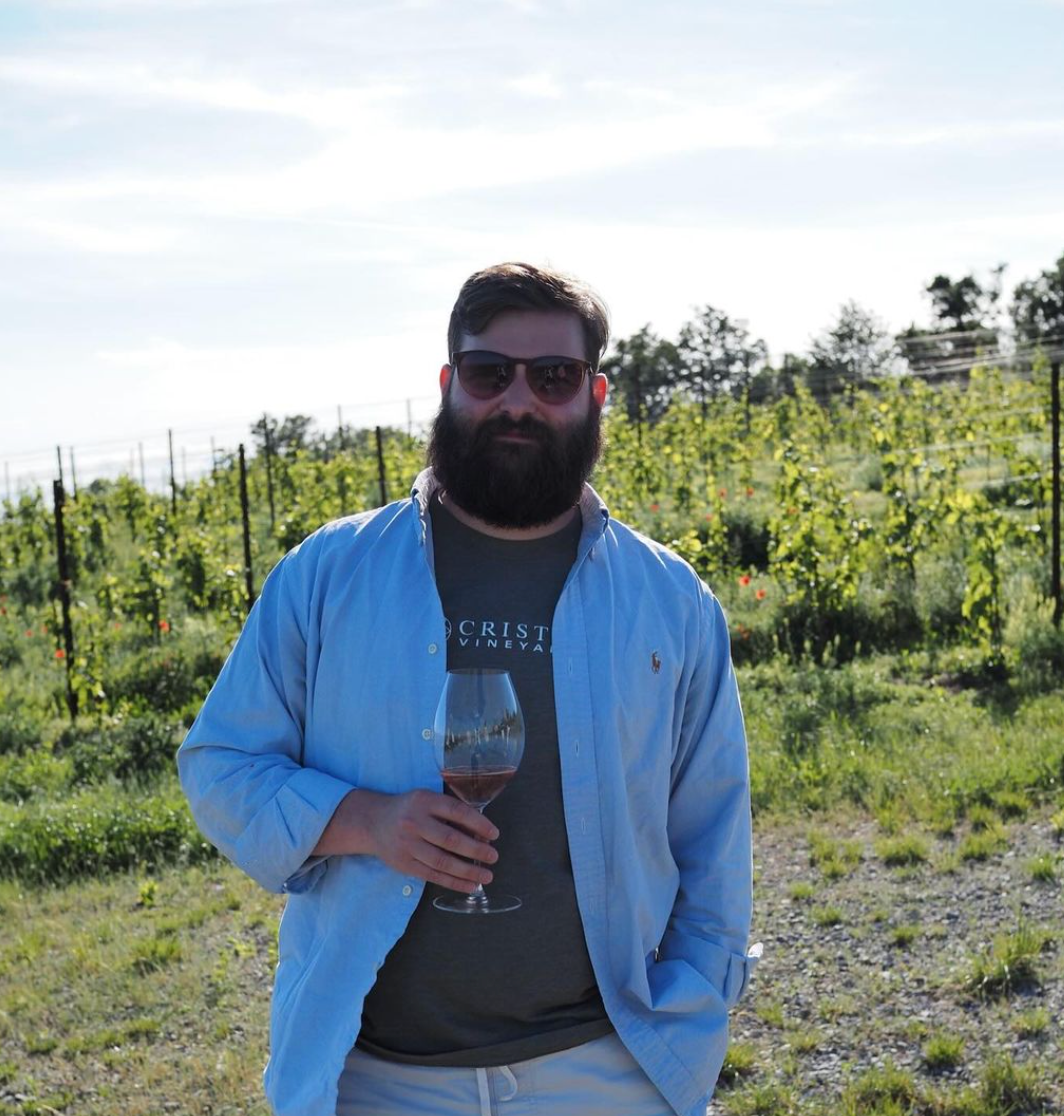
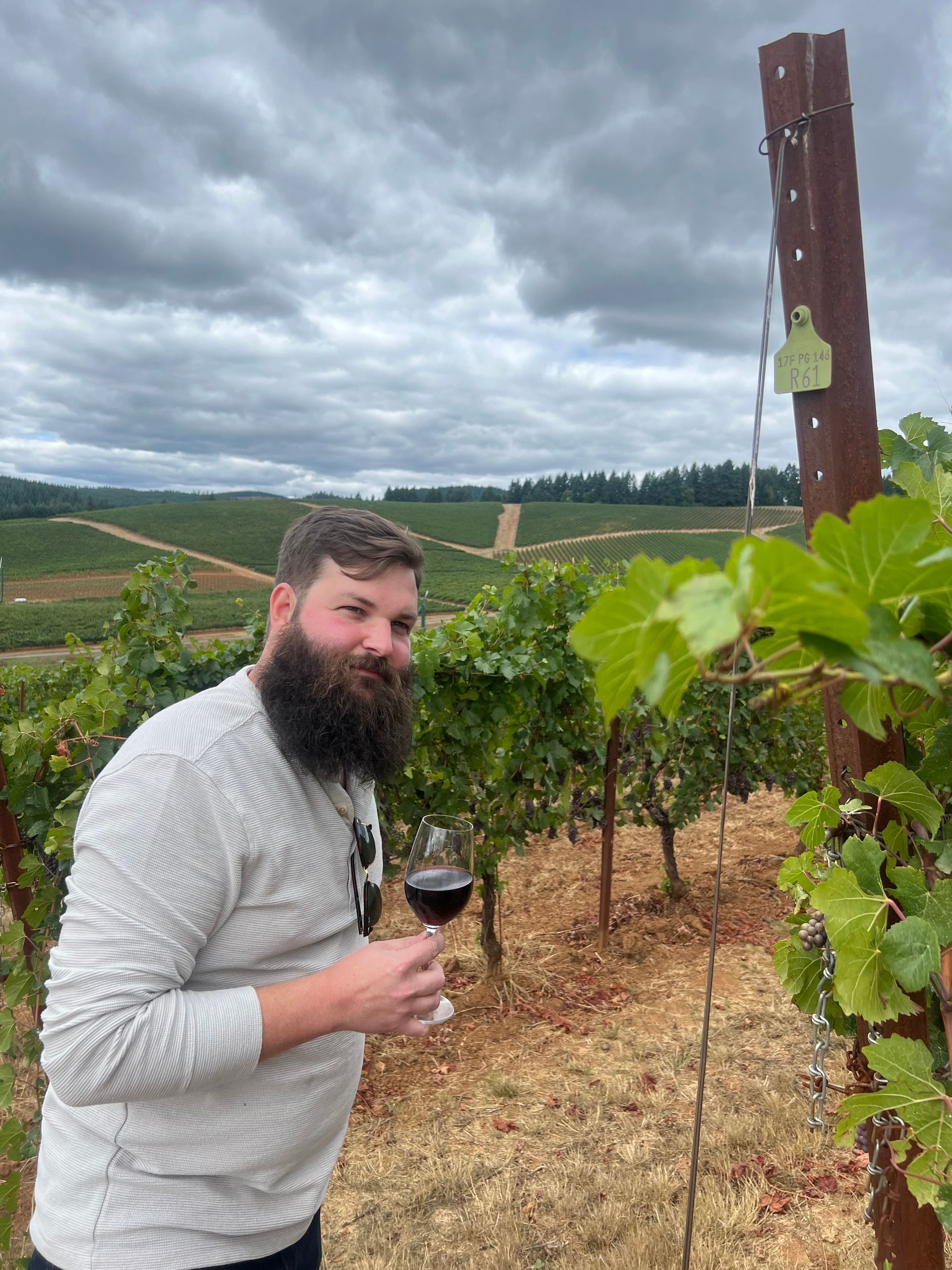

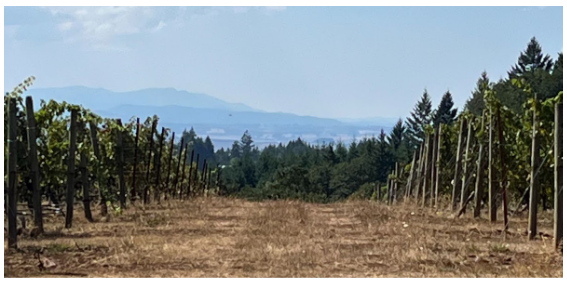
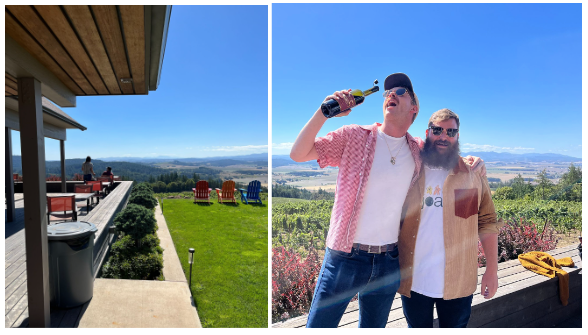
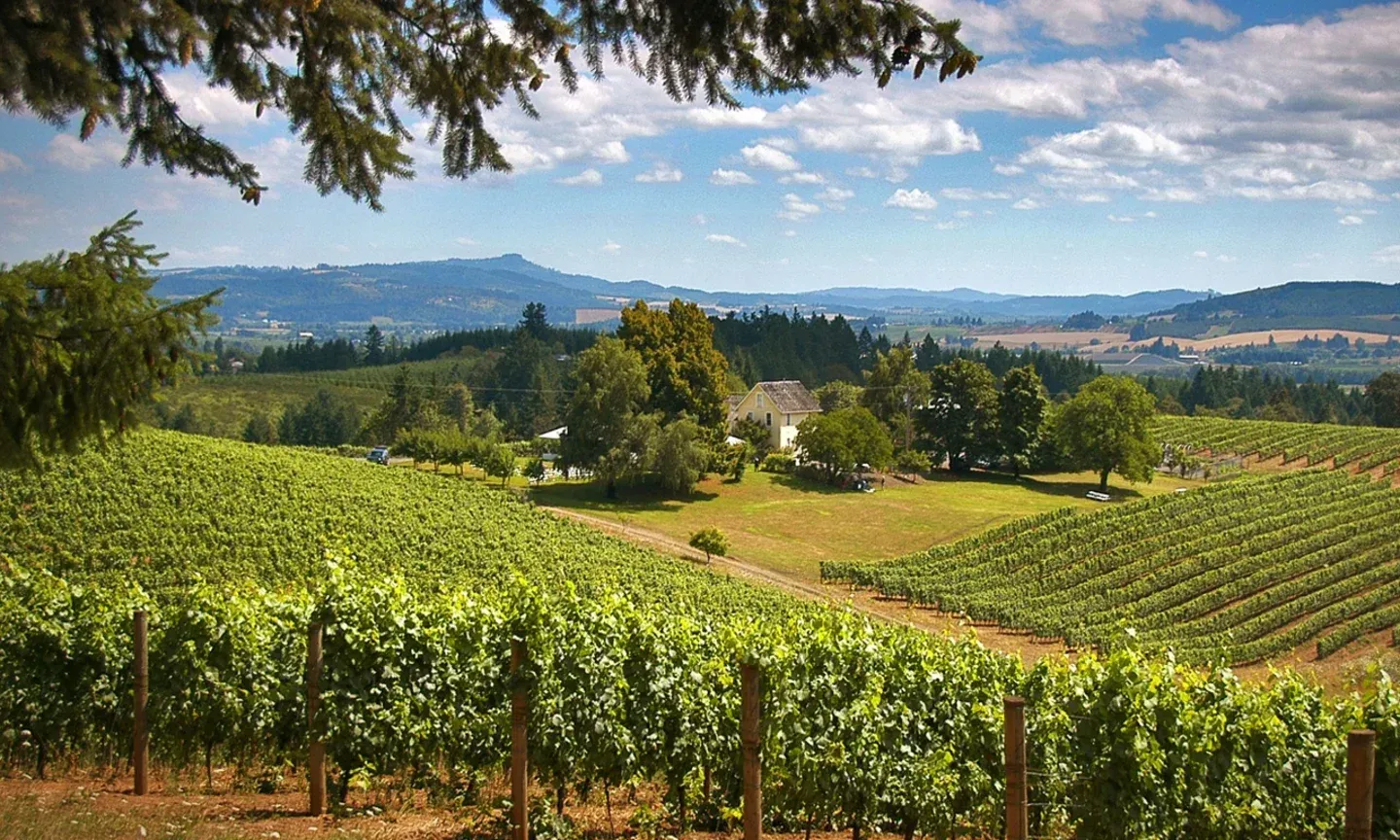
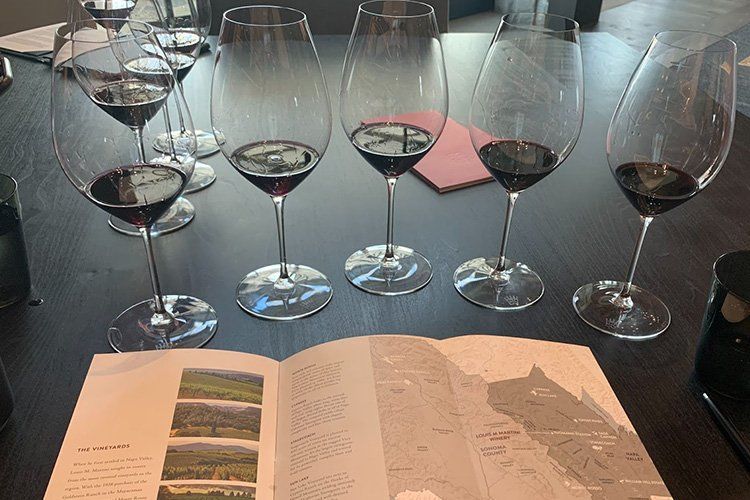
Store Hours
Mon - Thu: 9am - 9pm
Fri - Sat: 9am - 10pm
Sun: 10am - 6pm
Customer Feedback
All Rights Reserved | Frugal MacDoogal | Privacy Policy

